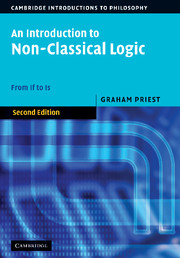Preface to the Second Edition
Published online by Cambridge University Press: 05 June 2012
Summary
The first edition of Introduction to Non-Classical Logic deals with just propositional logics. In 2004, Cambridge University Press and I decided to produce a second volume dealing with quantification and identity in nonclassical logics. Late in the piece, it was decided to put the old and the new volumes together, and simply bring out one omnibus volume. The practical decision caused a theoretical problem. Was it the same book as the old Introduction or a different one? The answer – as befits a book on non-classical logic – was, of course, both. So the name of the book had to be the same and different. We decided to achieve this seeming impossibility by adding an appropriate sub-title to the book, ‘From If to Is’. Though there are many propositional operators and connectives, the conditional, ‘if’, is perhaps the most vexed. It is, at any rate, the focus around which the old Introduction moves. Whether or not ‘if’ is univocal is a contentious matter; but ‘is’ is certainly said in many ways. There is the ‘is’ of predication (‘Ponting is Australian’), the ‘is’ of existence (‘There is a spider in the bathtub’, ‘Socrates no longer is’), and the ‘is’ of identity (‘2 plus 2 is 4’). All of these are in play in first-order logic; they provide the focus around which the new part of the book moves.
- Type
- Chapter
- Information
- An Introduction to Non-Classical LogicFrom If to Is, pp. xxi - xxviPublisher: Cambridge University PressPrint publication year: 2008



